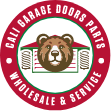Let’s be real—garage door spring isn’t exactly the most exciting topic. But when one breaks? Suddenly, it’s a big deal. Your garage door won’t open, you hear grinding noises, and, worst of all—things can get even more dangerous. If you’re a homeowner trying to figure it out yourself or a DIY enthusiast in Santa Ana who wants to make sure your garage door gets the right fix, this guide is for you. We will walk through the different spring types, how to tell which one you need, and why choosing the right one can save you a lot of time, money, and frustration.
Know The Two Types of Garage Door Springs
Before getting into specifics, let us understand the two main types of garage door springs:
Torsion Spring
A garage door torsion spring is usually mounted above the door. It twists and unwinds to lift and lower the garage door. These springs are more common in modern garage doors and offer better control and balance.
Extension Spring
Meanwhile, garage door extension springs on both sides of the door usually run along the tracks. They stretch and contract to move the garage door. You’ll often find them on older or lighter garage doors.
Still not sure which one you have? Take a quick peek above your garage door when it is closed. If you see a long spring stretched along the track, that’s an extension spring. If it’s a spring mounted across a metal rod above the door, it’s a torsion spring.
Check Your Garage Door Size and Weight
To choose the right garage door spring, you first need to understand your door’s size and weight. Heavier garage doors need stronger springs, while lighter garage doors require springs with less tension.
Every garage door spring is made to handle a specific weight range. If you use a spring that’s too weak, your opener will struggle, and the door may not lift at all. On the other hand, if it is too strong, it could fly up too fast and damage the garage door opener.
You can use a bathroom scale and a little help from a friend to get a rough estimate of your garage door weight. Or better yet—search for garage spring repair near me and ask a local pro to help weigh and measure it with safety in mind.
Learn the Garage Door Spring Color Coding System
Did you know garage door springs use color codes? This handy system created by DASMA helps you figure out the correct size and strength of the garage door spring. These colors make identifying the right spring easier.
Torsion Spring Color Coding System
Each garage door torsion spring has two color indicators:
- Cone color tells you the direction of the spring winds.
- Red cone: Right-wound spring (installed on the left side of the door).
- Black cone: Left-wound spring (installed on the right side).
- Wire gauge color shows the thickness of the spring. Some common examples include:
- Orange: .120, .192, .273, .363, .485 inches
- Red: .143, .225, .297, .422, .563 inches
- Blue: .188, .263, .344, .469 inches
This color system might seem overwhelming, but if you match the color to the correct gauge and wind direction, you will be on the right track.
Extension Spring Color Coding System
For garage door extension springs, the color represents the weight the spring can handle. Here is a quick cheat sheet:
- White: 10–110 lbs
- Green: 20–120 lbs
- Yellow: 30–130 lbs
- Blue: 40–140 lbs
- Red: 50–150 lbs
- Brown: 60–160 lbs
- Gold: 80–180 lbs
- Light Blue: 90–190 lbs
- Tan: 100–200 lbs
Look at the end of your garage door spring. If it is painted red, for example, it likely supports around 150 lbs. This guide makes overhead door spring repair way less confusing.
Choose Based on Durability and Performance
Did you know that some garage door springs last longer than others? Look at the cycle of a garage door spring—this means how many times the door can open and close before the spring wears out.
Should You Upgrade to a High-Cycle Spring?
If you use your garage door often—say, over four times a day—it might be worth investing in a high-cycle torsion spring replacement. These upgraded garage door springs may cost a bit more but can save you money and hassle in the long run.
Also, consider the material. Most springs are either oil-tempered or galvanized. Oil-tempered springs are more durable and resist wear and tear. On the other hand, galvanized springs look better but may not last as long.
How to Measure Garage Door Springs
Before you can replace a broken garage door spring, you need the right measurements. But how do you measure it correctly?
Measuring a Torsion Spring
To get the right torsion spring replacement, measure three things: the wire diameter, inside diameter, and spring length.
- Wire Diameter: Count 20 coils and measure their total length. Then, divide that number by 20. This number gives you the coil’s diameter.
- Inside Diameter: Check the metal cone on the spring. It often has a marking like “P-200” (which means 2 inches).
- Spring Length: Remove the spring safely, then measure end to end. Try to be precise—being off by even ¾ of an inch can lead to the wrong fit.
- Wind Direction: Look at the coils. If they go counterclockwise, it’s a left-hand wind. If clockwise, it’s right-hand.
Measuring an Extension Spring
If compared to torsion springs, measuring garage door extension springs is a lot easier. With the garage door closed, measure the spring from end to end. Then, find the door’s weight by placing a scale under the center once you remove the springs and disconnect the door from the opener. Matching the spring to the door weight is key. A spring that’s too weak can snap and cause damage.
Important: Measuring and replacing springs can be dangerous. If you’re unsure, call a garage door Santa Ana professional.
Do Not Forget the Safety Features
Garage door safety matters just as much as performance.
- Extension springs should always have safety cables. These cables stop the spring from flying off if it breaks.
- For torsion springs, consider installing a two-spring system instead of one. That way, if one breaks, the other can still hold the door temporarily.
Looking to fix a broken garage door spring? It is best not to go the DIY route. Reach out for a garage door repair Santa Ana or a local expert near you.
Where to Buy Garage Door Springs
Ready to buy a garage door spring? You can find them at hardware stores or trusted online retailers. But be careful—make sure you are buying from a source that follows DASMA standards. Avoid random deals that seem too good to be true. Cheap or incorrect springs could do more harm than good.
If you’re in the area, great news—we at Cali Garage Door Parts are your trusted suppliers of durable garage door springs in Santa Ana. Whether you need a torsion spring or extension spring or help with overhead door spring repair, we have a selection designed to meet your needs.
Feel free to browse our garage door springs collection to find the right fit for your garage.
Still Not Sure Which Garage Door Spring You Need? Let Us Help!
We get it—not everyone wants to dive into measurements and color codes. If you are unsure which garage door spring is right for your setup, contact our team at Cali Garage Door Parts. We are your local experts in garage door repair Santa Ana and trusted suppliers of high-quality garage door springs.Whether you need a torsion spring replacement, want to fix a garage door spring tension, or simply need advice, our reliable team is ready to help. We offer complete garage door service, from minor repairs to full system installation. Contact us today for expert support and same-day garage door service in Santa Ana!







